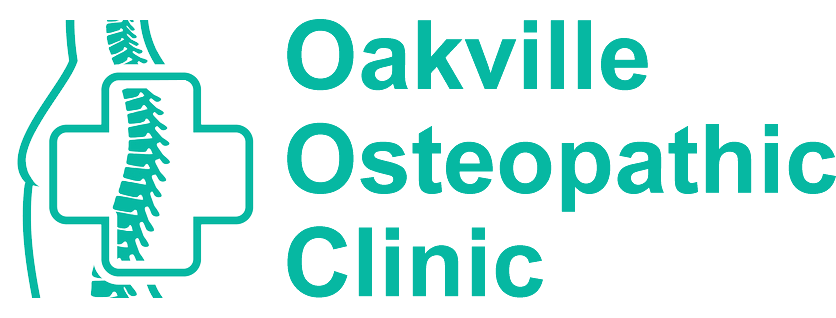What Is Osteopathy And How Does It Differ From Other Medical Approaches?
Are you in search of relief from chronic pain? You may have heard about osteopathy, but are not sure what it is or how it differs from other medical approaches. In this article, we will cover the basics of osteopathy and explore how it stands apart from traditional medicine. Keep reading to learn more!
Do you feel like your chronic pain isn’t being addressed by traditional methods? If so, then you should consider osteopathy as an alternative treatment option. Osteopathy is a type of manual therapy that uses gentle manipulation techniques to treat musculoskeletal issues such as joint stiffness, muscle spasms, and nerve entrapment. It has been used for centuries around the world to successfully reduce both acute and chronic pain caused by structural imbalances within the body.
Osteopaths focus on treating the underlying cause of physical ailments rather than simply masking symptoms with medication or surgery. By relying on palpation (touch) and skilled movements, they can identify areas where tension is held in order to restore balance throughout the entire body system. This holistic approach helps address any root causes contributing to one’s discomfort which distinguishes it from conventional treatments which often only target symptom relief.
Definition Of Osteopathy
I never thought I’d be going to an osteopath. After all, it sounded like a term reserved for ancient medical practices—but here I was! Little did I know that this form of treatment had been around since the 19th century and is now one of the most popular forms of alternative medicine in the US.
So what exactly is Osteopathy? It’s a type of holistic therapy focused on diagnosing, treating, and preventing disorders affecting the body’s musculoskeletal system (bones, joints, muscles). The goal is to restore balance within the body by removing any blockages that may restrict movement or cause pain. By addressing these areas, practitioners believe it can help improve overall health and well-being. Moving onto principles and techniques used…
Principles And Techniques Used
Osteopathy is a holistic medical approach that focuses on the structure and function of the body. It recognizes the relationship between bones, muscles, organs, and other structures in order to treat certain musculoskeletal issues and other chronic health conditions. Osteopathic practitioners use manual manipulation techniques such as stretching, deep tissue massage, joint mobilization, soft-tissue release, trigger point therapy, and myofascial release to reduce pain and improve mobility. They also may suggest dietary changes or lifestyle modifications help patients achieve optimal health. All these principles are used together to restore balance in the body’s systems so it can heal itself naturally.
The underlying principle of osteopathy is that by treating physical imbalances and restoring structural integrity, we can create an environment for healing within our bodies. This differs from traditional medicine where treatments often rely heavily on medications that only address symptoms without addressing the root cause of illness or injury. By using a variety of therapies tailored specifically to each individual patient’s needs, osteopathic treatment can be more effective at providing lasting relief from both acute and chronic conditions. With this comprehensive approach, osteopaths aim to get their clients back into optimum health as quickly as possible.


Comparison To Traditional Medicine
One might think that osteopathy is just a fancy name for traditional medicine, but nothing could be further from the truth. Sure, it shares some of the same principles and techniques as traditional medicine, but there are key distinctions between them. To start with, rather than looking only at symptoms to diagnose an illness or injury, osteopathic practitioners focus on the whole body-mind, and spirit included. While traditional doctors may prescribe medications to treat certain ailments, osteopaths use gentle manual therapies such as massage and stretching to help restore balance in the body’s systems.
The other major difference between orthodox medical practices and osteopathy lies in its approach toward the prevention. Osteopaths believe that by addressing issues earlier on they can not only reduce pain and suffering now but also prevent future health problems. This means regular check-ups, lifestyle advice, nutritional counseling, stress management techniques, and exercise regimens are all part of an effective treatment plan. Traditional medicine often fails to take into account the underlying causes behind a patient’s condition; whereas osteopaths seek out these root causes to create lasting solutions.
Benefits Of Osteopathic Treatment
Osteopathy is a holistic approach to healthcare that uses manual therapies to treat, diagnose and prevent medical conditions. It differs from other approaches in its emphasis on the musculoskeletal system, which includes tendons, ligaments, bones and muscles. Osteopathic treatments focus on improving overall health by helping to restore normal joint mobility and muscle balance.
The benefits of osteopathic treatment can be divided into physical and emotional categories. Physically, it helps individuals manage pain more effectively by restoring normal movement patterns through gentle manipulations of the spine and limbs. This leads to improved posture and alignment as well as better blood circulation throughout the body. On an emotional level, osteopathic treatment reduces stress levels while providing relaxation techniques such as deep breathing and massage therapy. These elements have been shown to help reduce anxiety or depression symptoms associated with chronic pain or illness.
In addition to these primary benefits, osteopaths also provide guidance for lifestyle changes including nutrition advice, exercise plans, and alternative therapies like yoga or acupuncture. All of these components work together in order to maximize personal well-being and promote long-term healing effects for patients seeking an effective form of natural healthcare
Osteopathy is an alternative and holistic approach to healthcare that has been around since the late 19th century. Its core principles are centered on the belief that the body’s musculoskeletal system is closely interconnected with other systems within the body, such as the nervous and digestive systems. Osteopaths use manual techniques like manipulation, massage, stretching, and exercise to restore balance throughout these systems. While traditional medicine focuses mainly on treating symptoms, osteopathic treatments take a more comprehensive view of health by addressing issues at their root cause.
By using imagery in my writing I hope to paint a vivid picture of what Osteopathy offers; it is about taking control of your own well-being by understanding how each element works together for your benefit. It’s not only about healing physical ailments but also emotional ones too – taking into account how our mind-body connection can influence overall health. By gaining an awareness of how all aspects interact you can begin to create a healthier lifestyle both mentally and physically.
The benefits of incorporating this practice into one’s life cannot be understated – from reducing pain and tension to improving mobility and flexibility, there is something for everyone when it comes to osteopathy! If you are looking for an effective way to improve your overall wellness without relying solely on medication or surgery then look no further than this centuries-old medical approach!
